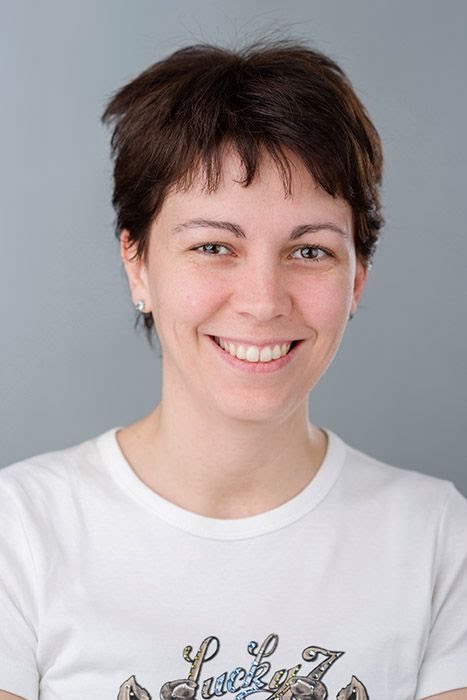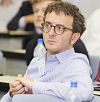Studying at the University of Verona
Here you can find information on the organisational aspects of the Programme, lecture timetables, learning activities and useful contact details for your time at the University, from enrolment to graduation.
Academic calendar
The academic calendar shows the deadlines and scheduled events that are relevant to students, teaching and technical-administrative staff of the University. Public holidays and University closures are also indicated. The academic year normally begins on 1 October each year and ends on 30 September of the following year.
Course calendar
The Academic Calendar sets out the degree programme lecture and exam timetables, as well as the relevant university closure dates..
| Period | From | To |
|---|---|---|
| Primo Semestre Magistrali | Oct 2, 2017 | Dec 22, 2017 |
| Secondo Semestre Magistrali | Feb 26, 2018 | May 25, 2018 |
| Session | From | To |
|---|---|---|
| Esami sessione invernale Magistrali | Jan 8, 2018 | Feb 23, 2018 |
| Esami sessione estiva Magistrali | May 28, 2018 | Jul 6, 2018 |
| Esami sessione autunnale 2018 | Aug 27, 2018 | Sep 14, 2018 |
| Session | From | To |
|---|---|---|
| Lauree sessione autunnale (validità a.a. 2016/17) | Nov 27, 2017 | Nov 28, 2017 |
| Lauree sessione invernale (validità a.a. 2016/17) | Apr 4, 2018 | Apr 6, 2018 |
| Lauree sessione estiva (validità a.a. 2017/18) | Sep 10, 2018 | Sep 11, 2018 |
| Period | From | To |
|---|---|---|
| All Saints Day | Nov 1, 2017 | Nov 1, 2017 |
| Festa Immacolata Concezione | Dec 8, 2017 | Dec 8, 2017 |
| attività sospese (Natale) | Dec 23, 2017 | Jan 7, 2018 |
| Easter break | Mar 30, 2018 | Apr 3, 2018 |
| Liberation Day | Apr 25, 2018 | Apr 25, 2018 |
| attività sospese (Festa dei lavoratori) | Apr 30, 2018 | Apr 30, 2018 |
| Labour Day | May 1, 2018 | May 1, 2018 |
| Festa Patronale | May 21, 2018 | May 21, 2018 |
| attività sospese estive | Aug 6, 2018 | Aug 24, 2018 |
Exam calendar
Exam dates and rounds are managed by the relevant Economics Teaching and Student Services Unit.
To view all the exam sessions available, please use the Exam dashboard on ESSE3.
If you forgot your login details or have problems logging in, please contact the relevant IT HelpDesk, or check the login details recovery web page.
Should you have any doubts or questions, please check the Enrollment FAQs
Academic staff
 massimo.franchetti@univr.it
massimo.franchetti@univr.it
 paolo.frigo@univr.it
paolo.frigo@univr.it
 enrico.moretto@univr.it
enrico.moretto@univr.it

Taschini Luca
 luca.taschini@univr.it
luca.taschini@univr.it
 045 802 8736
045 802 8736
Study Plan
The Study Plan includes all modules, teaching and learning activities that each student will need to undertake during their time at the University.
Please select your Study Plan based on your enrollment year.
1° Year
| Modules | Credits | TAF | SSD |
|---|
2° Year activated in the A.Y. 2018/2019
| Modules | Credits | TAF | SSD |
|---|
| Modules | Credits | TAF | SSD |
|---|
| Modules | Credits | TAF | SSD |
|---|
| Modules | Credits | TAF | SSD |
|---|
Legend | Type of training activity (TTA)
TAF (Type of Educational Activity) All courses and activities are classified into different types of educational activities, indicated by a letter.
Stochastic Models for Finance (2017/2018)
Teaching code
4S02482
Academic staff
Coordinator
Credits
9
Language
Italian
Scientific Disciplinary Sector (SSD)
SECS-S/01 - STATISTICS
Period
Primo Semestre Magistrali dal Oct 2, 2017 al Dec 22, 2017.
Learning outcomes
The course provides to students in economics and finance an overview of the theory of probability at an intermediate level. Prerequisite to the course is an elementary knowledge of probability at the level of an undergraduate first or second year introductory course in probability and statistics. In particular, a basic knowledge of the following topics is recommended: most common univariate discrete and continuous distributions; weak law of large numbers; central limit theorem. The final objective of the course is to give an introduction to the advanced theory of conditional expectation, of stochastic processes in the discrete and continuous time domains and to stochastic integration.
Program
• Probability spaces and Kolmogorov’s axioms: sigma-algebras; event trees; elementary conditional probability; Bayes theorem; independence.
• Random variables: discrete, absolutely continuous and singular random variables; expectation; Tchebycheff inequality; Jensen inequality; moment generating function.
• Multidimensional random variables: multidimensional discrete and continuous random variables; joint distribution function; joint density function; marginal and conditional distributions; marginal and conditional densities; independence; covariance; coefficient of correlation of Bravais; Cauchy-Schwarz inequality; joint moment generating function.
• Distributions of functions of random variables: transformations of random variables; method of the distribution function; distribution of the minimum and the maximum; method of the moment generating function; log-normal distribution; probability integral transform; transformations of vectors of random variables.
• Limits of random variables: infinite series of random variables; convergence in probability, in distribution, with probability one (almost surely) and in mean; weak law of large numbers and law of large numbers of Bernoulli for relative frequencies; central limit theorem; Borel’s lemma and Borel’s strong law of large numbers; order statistics; empirical distribution function.
• Conditional expectation: conditional probability and conditional expectation with respect to a finite partition; conditional expectation with respect to a sigma-algebra.
• Discrete time martingales: filtrations; martingales on finite probability spaces; martingales and stopping times; betting strategies and impossibility of a winning betting strategy.
• Continuous time stochastic processes: definitions and finite-dimensional distributions; filtrations; adapted processes; filtrations generated by a stochastic process; stationary processes; processes with stationary increments and with independent increments; counting processes and Poisson processes; Gaussian processes and Wiener processes (Brownian motions); Wiener process as a limit of a random walk; properties and irregularities of the sample trajectories (non derivability and infinite variation); Markov processes, transition probabilities and Chapman-Kolmogorov equations; continuous time martingales.
• Stochastic integrals: overview of Riemann-Stiltjes integral; definition and properties of Itô’s integral; Itô’s formula, properties and applications; martingales associated to a Wiener process; diffusions; geometric Brownian motion; Radom-Nikodym derivative; Girsanov's theorem.
TEXTBOOKS
- A. M. Mood, F. A. Graybill, D. C. Boes (1991). Introduzione alla Statistica. McGraw-Hill, Milano.
- B. V. Gnedenko (1979). Teoria della Probabilità. Editori Riuniti, Roma.
- R. V. Hogg, A. T. Craig (1994). Introduction to Mathematical Statistics, 5th Edition. Macmillan.
- A. N. Shiryaev (1996). Probability, 2nd Edition. Springer, New York.
- S. E. Shreve (2004). Stochastic Calculus for Finance II: Continuous-Time Models. Springer, New York.
- S. E. Shreve (2004). Stochastic Calculus for Finance I: The Binomial Asset Pricing Model. Springer, New York.
SUPPORTING MATERIAL
Other supporting material, written records of the lessons, handouts, exercises and past exam papers with solutions will be distributed during the course and will be made available on the E-learning platform of the University.
READING LIST
- P. Baldi (1998). Calcolo delle Probabilità e Statistica, 2a Edizione. Mc Graw-Hill.
- D. M. Cifarelli (1998). Introduzione al Calcolo delle Probabilità. Mc Graw-Hill, Milano.
- W. Feller (1968). An Introduction to Probability Theory and Its Applications, Volume 1, 3rd Edition. Wiley.
- B. V. Gnedenko (1979). Teoria della Probabilità. Editori Riuniti, Roma.
- G. R. Grimmett, D. R. Stirzaker (2001). Probability and Random Processes, 3rd Edition. Oxford University Press.
- G. R. Grimmett, D. R. Stirzaker (2001). One Thousand Exercises in Probability. Oxford University Press.
- J. Jacod, P. Protter (2000). Probability Essentials. Springer, New York.
- S. Lipschutz (1975). Calcolo delle Probabilità, Collana Schaum. ETAS Libri.
- T. Mikosch (1999). Elementary Stochastic Calculus With Finance in View. World Scientific, Singapore.
STUDY GUIDE
Detailed indications, regarding the use of the textbooks, will be given during the course.
PREREQUISITES
Students are supposed to have acquired all notions and basic concepts usually taught in a first undergraduate university course in probability and statistics: main discrete and continuous univariate distributions, main limit theorems such as the weak law of large numbers and the central limit theorem.
EXERCISES
Exercises are an integral part of the course and are necessary to an adequate understanding of the topics.
TEACHING METHODS
Course load is equal to 54 hours (equal to 9 ECTS). All classes are essential to a proper understanding of the topics of the course. The working language is Italian.
TUTORING ACTIVITIES
In addition to lessons and exercise hours, before each exam session there will be tutoring hours devoted to revision. More detailed information will be available during the course.
| Author | Title | Publishing house | Year | ISBN | Notes |
|---|---|---|---|---|---|
| W. Feller | An Introduction to Probability Theory and Its Applications, Volume 1 (Edizione 3) | Wiley | 1968 | ||
| S. Lipschutz | Calcolo delle Probabilità, Collana Schaum | ETAS Libri | 1975 | ||
| P. Baldi | Calcolo delle Probabilità e Statistica (Edizione 2) | Mc Graw-Hill | 1998 | 8838607370 | |
| T. Mikosch | Elementary Stochastic Calculus With Finance in View | World Scientific, Singapore | 1999 | ||
| R. V. Hogg, A. T. Craig | Introduction to Mathematical Statistics (Edizione 5) | Macmillan | 1994 | ||
| D. M. Cifarelli | Introduzione al Calcolo delle Probabilità | McGraw-Hill, Milano | 1998 | ||
| A. M. Mood, F. A. Graybill, D. C. Boes | Introduzione alla Statistica | McGraw-Hill, Milano | 1991 | ||
| G. R. Grimmett, D. R. Stirzaker | One Thousand Exercises in Probability | Oxford University Press | 2001 | 0198572212 | |
| A. N. Shiryaev | Probability (Edizione 2) | Springer, New York | 1996 | ||
| G. R. Grimmett, D. R. Stirzaker | Probability and Random Processes (Edizione 3) | Oxford University Press | 2001 | 0198572220 | |
| J. Jacod, P. Protter | Probability Essentials | Springer, New York | 2000 | ||
| S. E. Shreve | Stochastic Calculus for Finance II: Continuous-Time Models | Springer, New York | 2004 | ||
| S. E. Shreve | Stochastic Calculus for Finance I: The Binomial Asset Pricing Model | Springer, New York | 2004 | ||
| B. V. Gnedenko | Teoria della Probabilità | Editori Riuniti Roma | 1979 |
Examination Methods
The final exam consists of a written test (of two hours and 30 minutes) followed by an oral session (of approximately 30 minutes). Both written and oral sessions are mandatory. For the written test, students can use a scientific calculator; any other material (books, notes, etc.) is forbidden. To be admitted to the oral session, students must receive at least 15 out of 30 in the written test. Contents, assessment methods and criteria are the same for all students and do not depend on the number of classes attended.
Teaching materials e documents
-
 01) Informazioni sul corso
(pdf, it, 87 KB, 21/09/17)
01) Informazioni sul corso
(pdf, it, 87 KB, 21/09/17)
Type D and Type F activities
| years | Modules | TAF | Teacher | |
|---|---|---|---|---|
| 1° | An Introduction to the History of Economics and Business Economics | D |
Sergio Noto
(Coordinator)
|
|
| 1° | Introduction to dynamic optimization with economic applications | D | Not yet assigned | |
| 1° 2° | Python Laboratory | D |
Marco Minozzo
(Coordinator)
|
|
| 1° 2° | Advanced Excel Laboratory (Verona) | D |
Marco Minozzo
(Coordinator)
|
|
| 1° 2° | Excel Laboratory (Verona) | D |
Marco Minozzo
(Coordinator)
|
|
Career prospects
Module/Programme news
News for students
There you will find information, resources and services useful during your time at the University (Student’s exam record, your study plan on ESSE3, Distance Learning courses, university email account, office forms, administrative procedures, etc.). You can log into MyUnivr with your GIA login details: only in this way will you be able to receive notification of all the notices from your teachers and your secretariat via email and soon also via the Univr app.
Graduation
List of theses and work experience proposals
| theses proposals | Research area |
|---|---|
| Tesi di laurea magistrale - Tecniche e problemi aperti nel credit scoring | Statistics - Foundational and philosophical topics |
| Fattori ESG e valutazione d'azienda | Various topics |
| Il metodo Monte Carlo per la valutazione di opzioni americane | Various topics |
| Il Minimum Requirement for own funds and Eligible Liabilities (MREL) | Various topics |
| L'acquisto di azioni proprie | Various topics |
| Proposte Tesi A. Gnoatto | Various topics |













